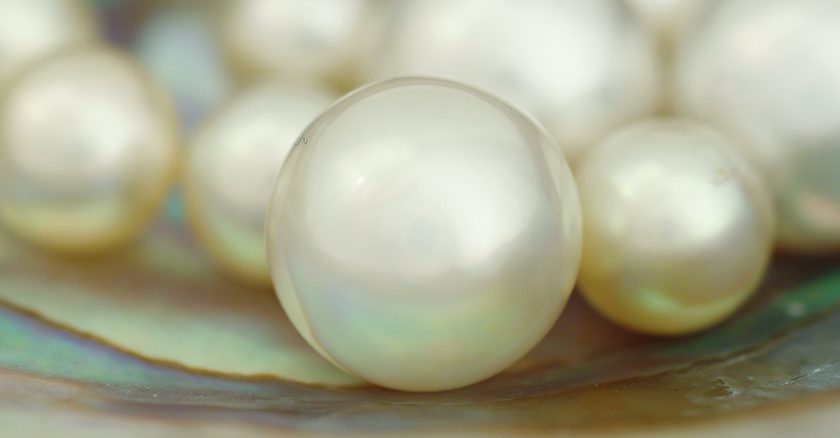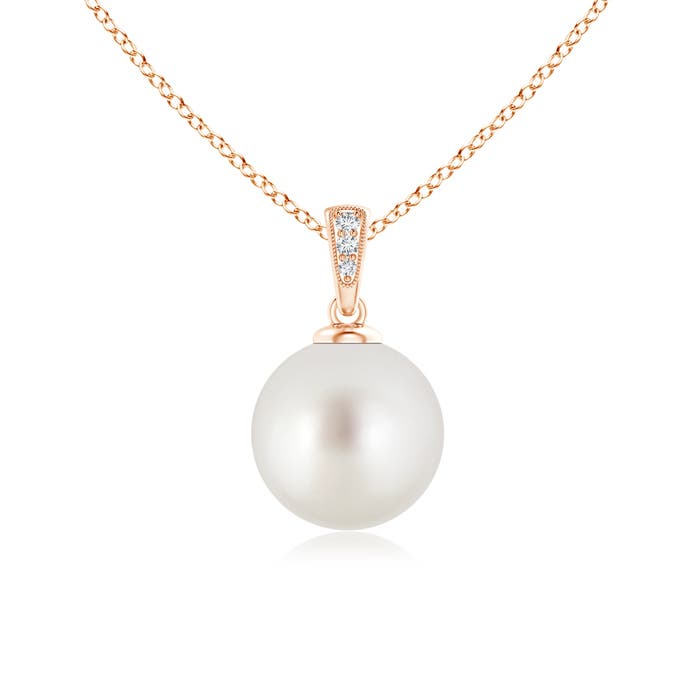South sea pearls are the most desired cultured pearl variety in the world.
You ask why? It is because of their unparalleled size, shape, luster and nacre thickness as well as zero surface flaws.
They are grown in the pinctada maxima saltwater pearl oysters which can create golden or white pearls. The gold-lipped oysters produce Golden South Sea pearls, and the silver-lipped oysters produce White South Sea pearls!
Intrigued by South Sea pearls and want to learn more about them? You’ve come to the right place!
Scroll down to read five interesting facts about these rare and gorgeous pearls.

1. South Sea Pearls Are the Rarest
Like most saltwater oysters, the South Sea pearl oysters are also bead nucleated. They produce the thickest nacre, ranging between 2-4mm thick.
However, the South Sea pearls take the longest time to cultivate, almost the double of the time taken by Akoya pearls.
The growth duration is anywhere between 2-4 years. That’s not all, the pinctada maxima saltwater pearl oysters are vulnerable to diseases, therefore they need to be kept in their native habitat.
These phenomena make South Sea pearls the rarest cultured pearl variety.
2. Majorly Cultivated in Australia and Philippines
Cultivation of South Sea pearls requires special skill set, environment and time. White South Sea pearls are majorly cultivated along the northern coast of Australia and southern coast of China.
The water in this region is very clean and loaded with plankton – the Pinctada maxima’s favorite food. This helps speed up the process and obtain highly lustrous pearls. The Golden South Sea pearls are majorly produced in Philippines and Indonesia.
3. South Sea Pearls Are the Largest in Size
Among all cultured pearls in the world, South Sea pearls are the largest in size. This is because of four reasons – the Pinctada maxima is a big oyster. A large-sized nucleus bead along with a mantle tissue is implanted in the oyster.
Thick layers of nacre get deposited around the nucleus bead over the course of 2 to 4 years. Last but not the least, the oyster’s environment also plays an important role.
The warm temperature of the water accelerates the oyster’s metabolism. South Sea pearls range between 9mm and 20mm and their average size is said to be 13mm.
4. They Command the Highest Price
Did you know only 10-30% of the harvested South Sea pearls turn out to be round or near-round in shape?
The rest are baroque or drop-shaped. Since the cultivation period is long, obtaining pearls that are similar in size, color and quality is a time-consuming process.
This is why a South Sea pearl strand is not something you’ll come across often. South Sea pearls are the largest in size, but they are scarce and therefore quite expensive.
5. Take the Longest Time to Cultivate
South Sea pearls are rare and expensive because they take the longest time to cultivate. It starts with diving about 80 meters deep in the South Sea to find healthy Pinctada maxima that are suitable for pearl cultivation.
Once the oysters are collected, they are kept in clean, healthy water before the harvesting process begins. A small piece of mantle tissue and large-sized nucleus bead are inserted in the oyster through a surgical incision.
After covering the incision, the oyster is returned to the water where it creates a pearl sac around the nucleus bead and covers it with thousands of layers of nacre over the course of 2 to 4 years.
Did You Know?
Pearl is the only gem that is created by a living creature!
Also Read: Top 5 Facts on Cultured Pearls
FAQ
1. Why are they called South Sea pearls?
South Sea pearls derive their name from the area where they are cultivated. The largest number of South Sea pearls are harvested along the southern hemisphere, around Australia.
2. Are South Sea pearls valuable?
Yes, South Sea pearls are quite valuable. In fact, they are the most expensive in comparison to their cultured pearl cousins. Their large size increases their value further.
3. How to identify South Sea pearls?
Identifying South Sea pearls is quite easy. They have a mirror-like luster and are quite large in size. They also have a thicker nacre than most cultured pearl varieties.






























